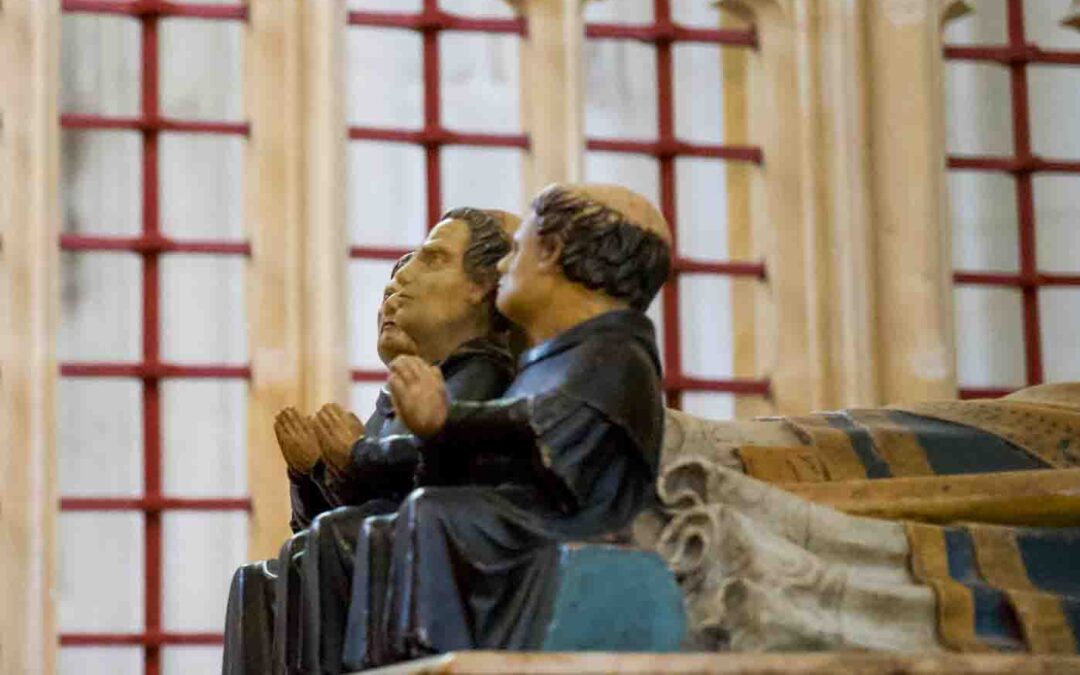Royal masons working at Winchester in the 1360s developed the ‘cage’ chantry.[i] The earliest free-standing ‘cage’ chantries in England are the two built in the nave of the cathedral. They were built for Bishop William Edington and Bishop William Wykeham.
| Years as Bishop | Location of Chantry | ||
| 1 | William Edington | 1345-1366 | S side of Nave (east) |
| 2 | William of Wykeham | 1366-1404 | S side of Nave (midway) |
These chantries reflect architectural styles of the latter part of the 14th C, created by accomplished masons at the forefront of innovation in the Perpendicular Gothic.
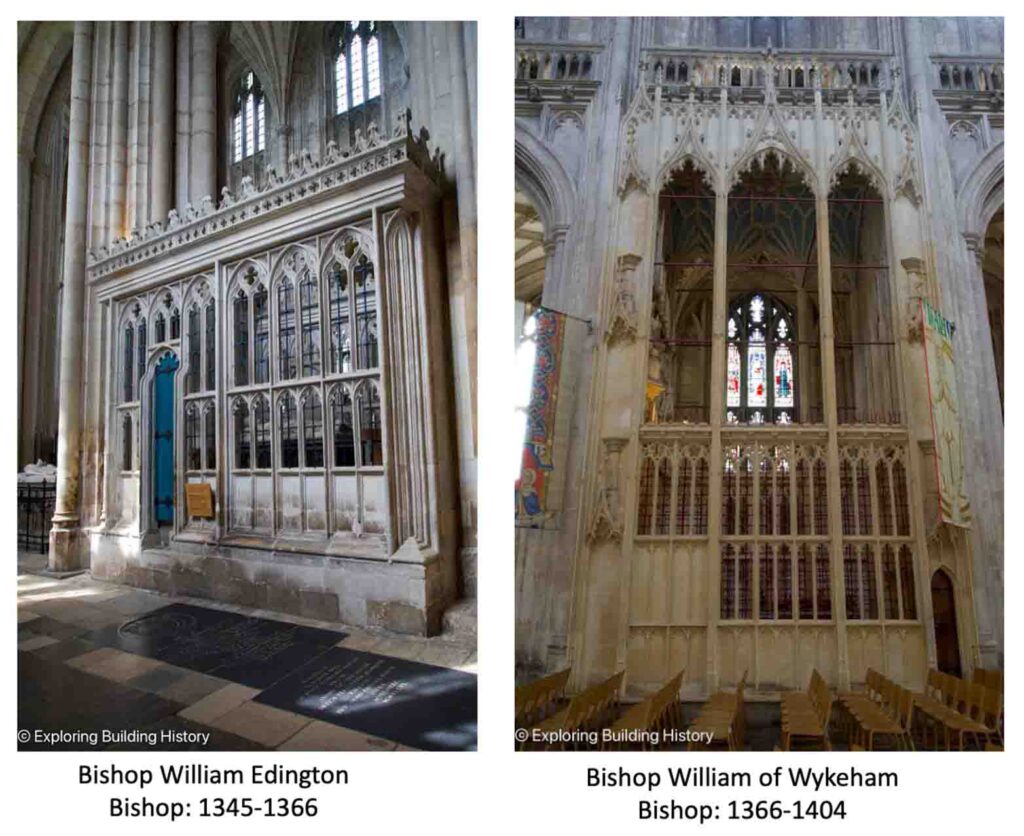
Bishop William Edington (Bishop from 1345 to 1366)
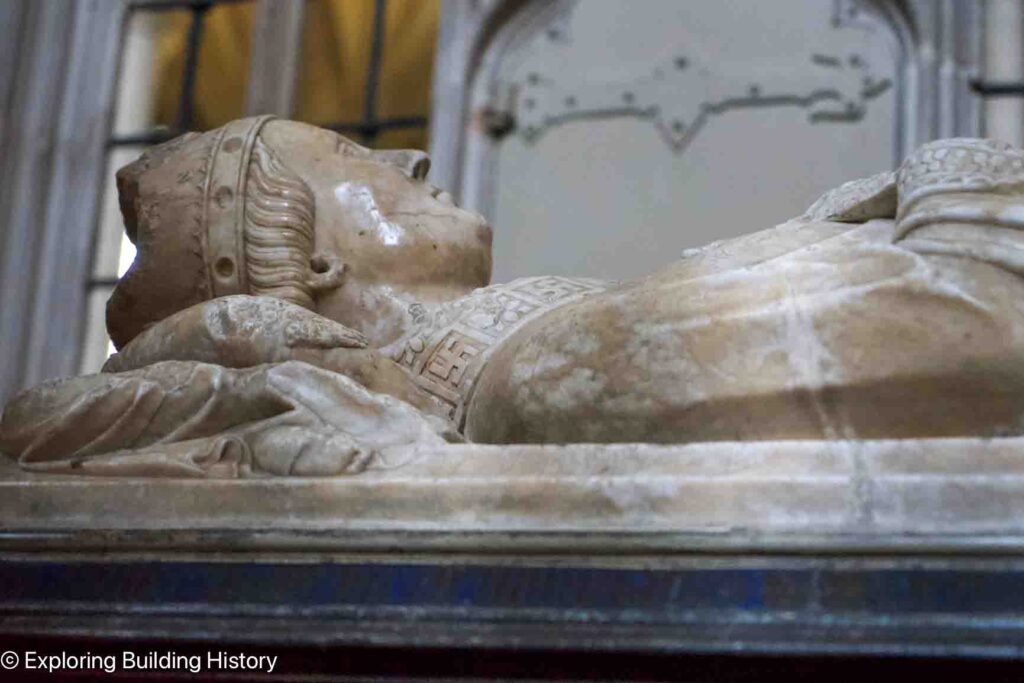
Bishop Edington was not born to noble stock but managed to rise through the ranks. He lived under the reign of the Edward III (r. 1372-1377) and saw the arrival and devastation of the Black Death in 1348 whilst he was bishop. It is curious that considering plague and the Hundred Years’ War (1337-1453) with France, the innovation of architecture flourished in England. Sometimes innovation is a reaction to uncertainty and fear.
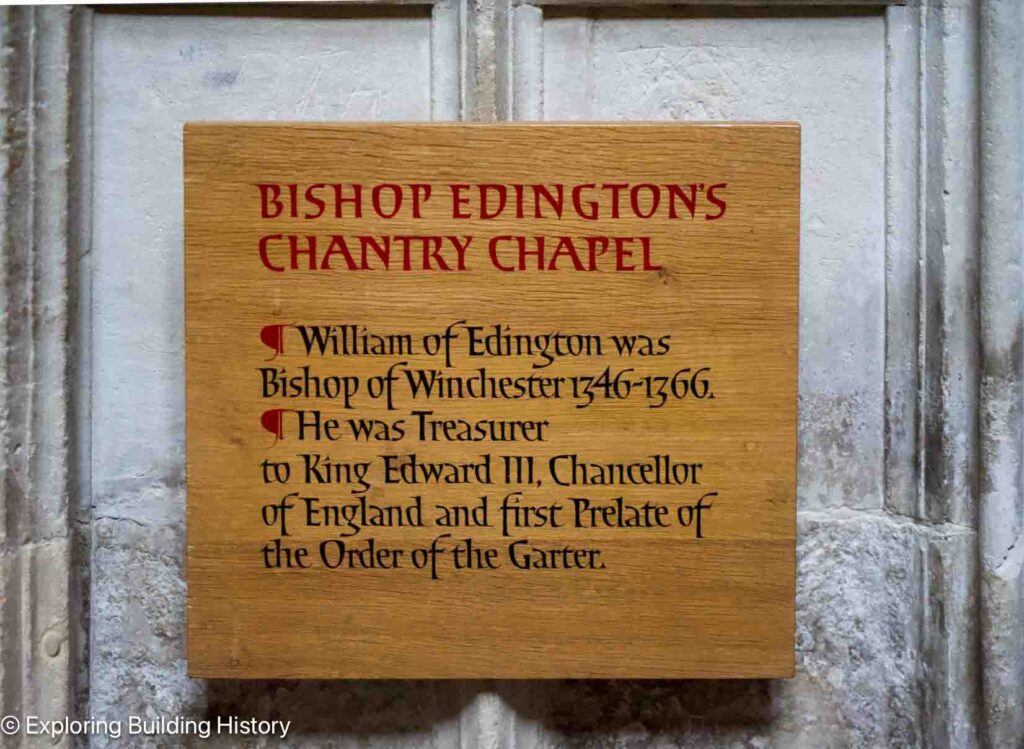
The earliest cage chantry known in England is that belonging to Bishop Edington.[ii] It is therefore the first in the cathedral. Winchester was the richest see in England and grand ideas could be imagined. Edington’s vision was to restore the nave of the cathedral, which eventually became a redesign under the management of his successor, Bishop William of Wykeham. Edington only managed to achieve the commencement of the west front at one end of the nave and his chantry at the other. He had access to royal masons who were at the forefront of the new Perpendicular style.[iii]
As early as the 1360s the royal masons working at Winchester designed the new concept of a cage chantry, which was innovatively placed at the east end of the nave. This ‘micro chapel’ included the bishop’s tomb and an altar for the chantry priest. A rectangular set of stone panels, topped with rows of Perpendicular screens. It is topped with a crenelation on a frieze of open cutwork quatrefoils. There is no roof. The regular, Perpendicular grid operate as windows without glass and the marble effigy of the bishop can be seen.

Rectangular Cage Chantry: no roof, strong vertical lines of the Perpendicular. Gothic tracery with hollow quatrefoils and cusping. Early simple version of Perpendicular.
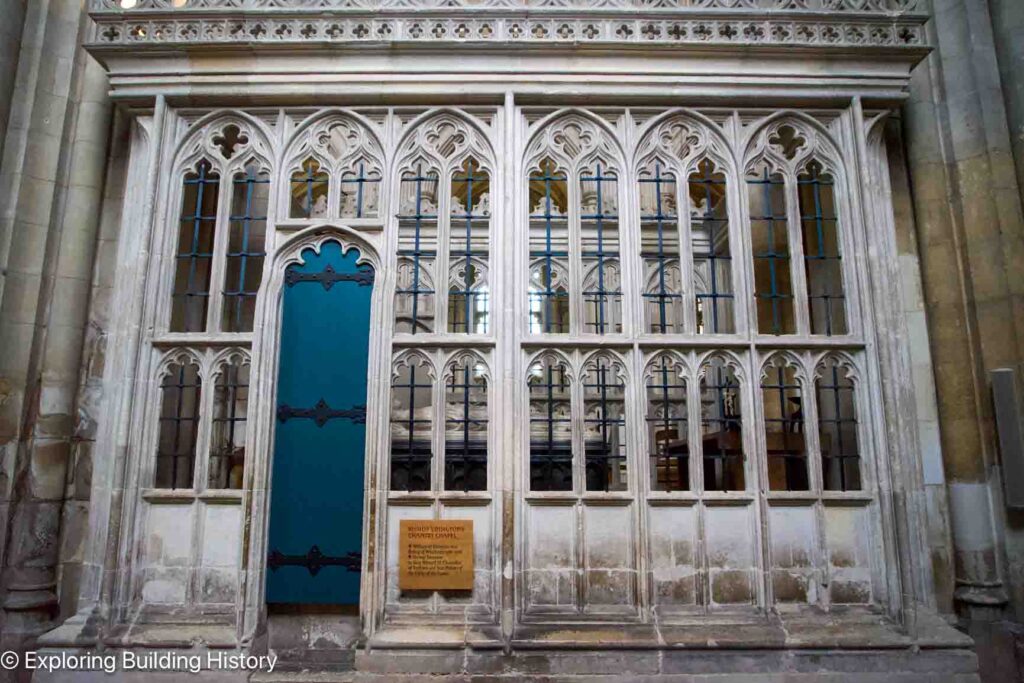
Perpendicular panel tracery with mullions and transoms in repetitive rows with cusped headers and quatrefoils.
Bishop William Wykeham (Bishop from 1366 to 1404)
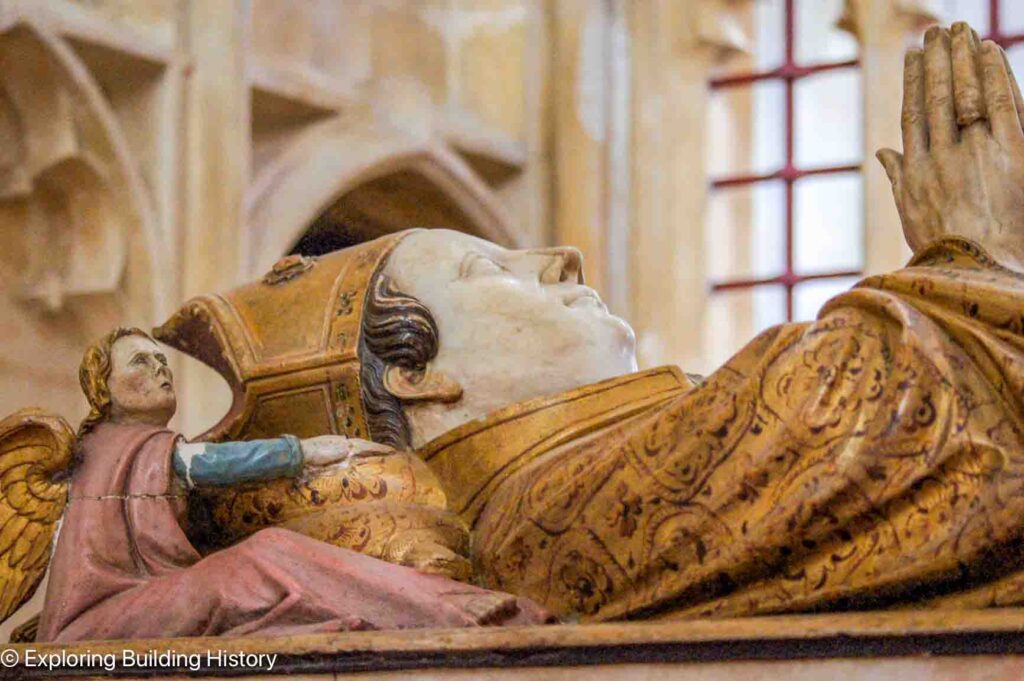
William Wykeham was from gentry stock and managed to rise to Chancellor of England and Lord Privy Seal as well as bishop of Winchester. He founded Winchester College and New College, Oxford. It may well be that Bishop Edington was a patron who provided openings to him.[iv]
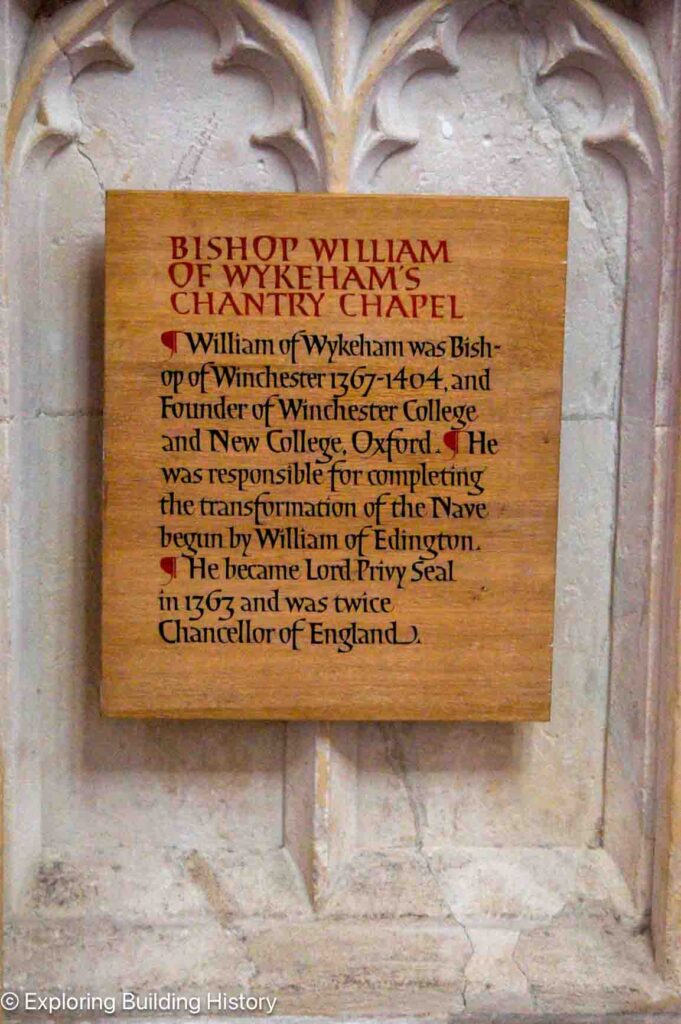
Bishop Wykeham’s mason was William of Wynford. Their project was to rework the old Norman nave into something innovate and new in Perpendicula splendour. This required initially carving the 11th C walls into linear designs. Then later they scraped off off several inches of surface and applied a new stone skin.[v]
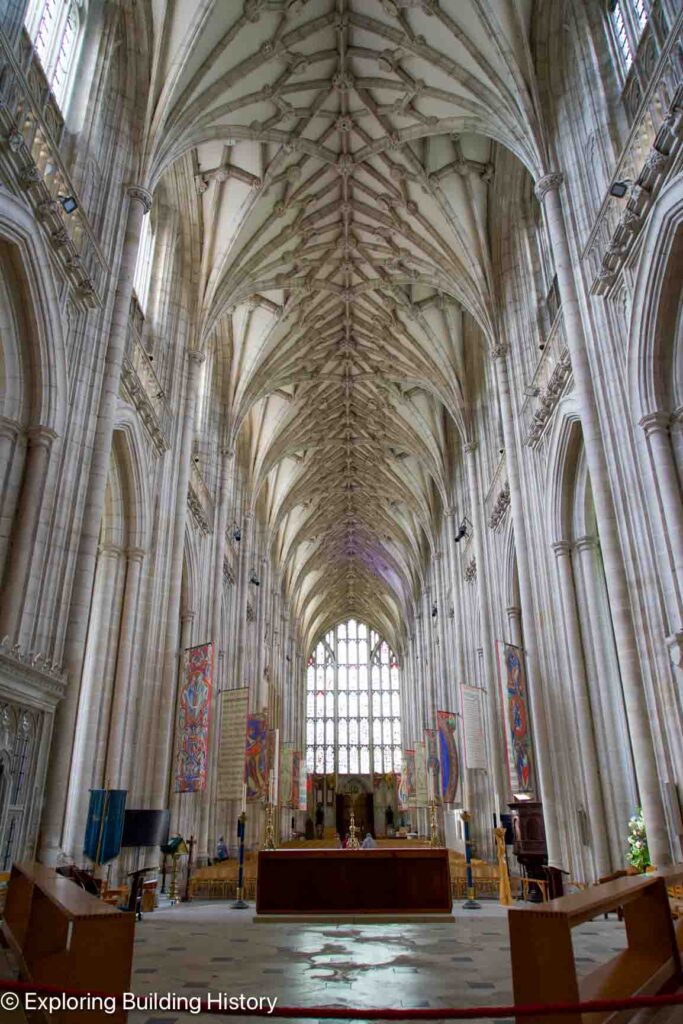
Winchester Cathedral Nave Looking West. Creamy white Beer Stone was employed.
Norman-rounded arches were turned to gothic pointed ones. Perpendicular stone screen was effectively overlaid the old Norman nave. The wooden roof was replaced by a lierne vault. Bishop Wykeham had his chantry built between two arcade piers halfway down the nave on the south side.
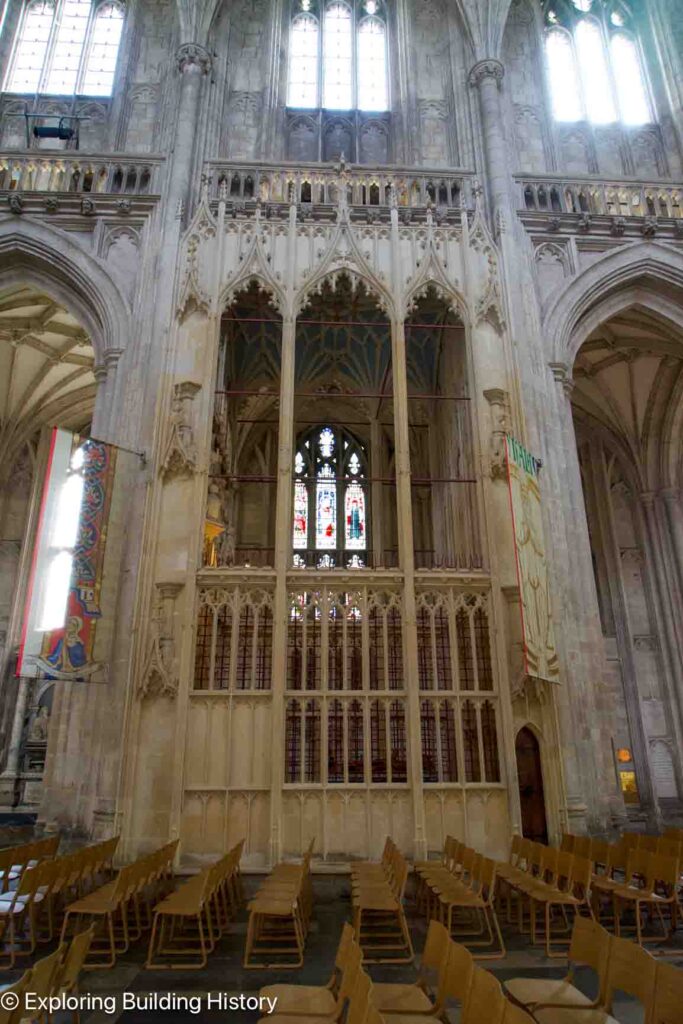
Bishop Wykeham’s Chantry
Bishop Wykeham’s chantry has been built like a small church. It is still a cage but there is a ceiling, unlike his predecessor’s Bishop Edington. The chantry is soaring up from the ground floor of the nave to the triforium, neatly fitting with the newly Perpendicular face lift of the nave. It has the concept of Perpendicular panels like that of Bishop Edington’s chantry, but there is greater elaboration when one gets closer.
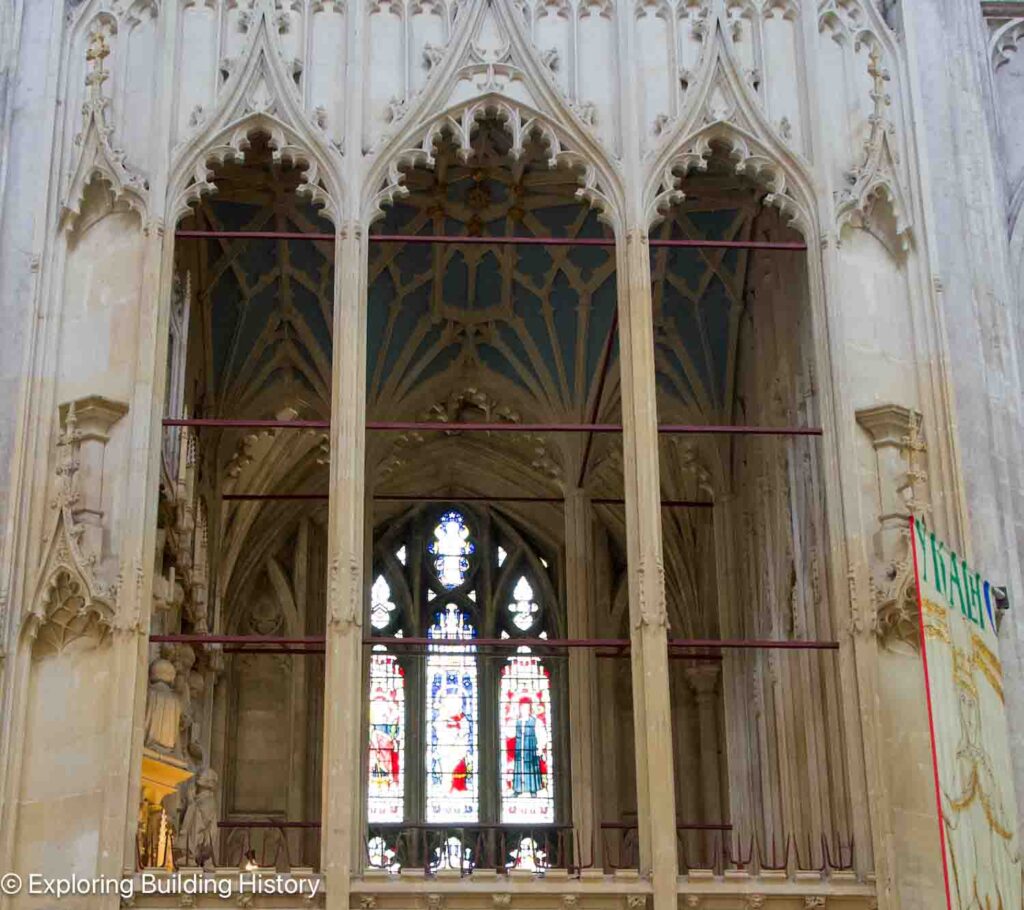
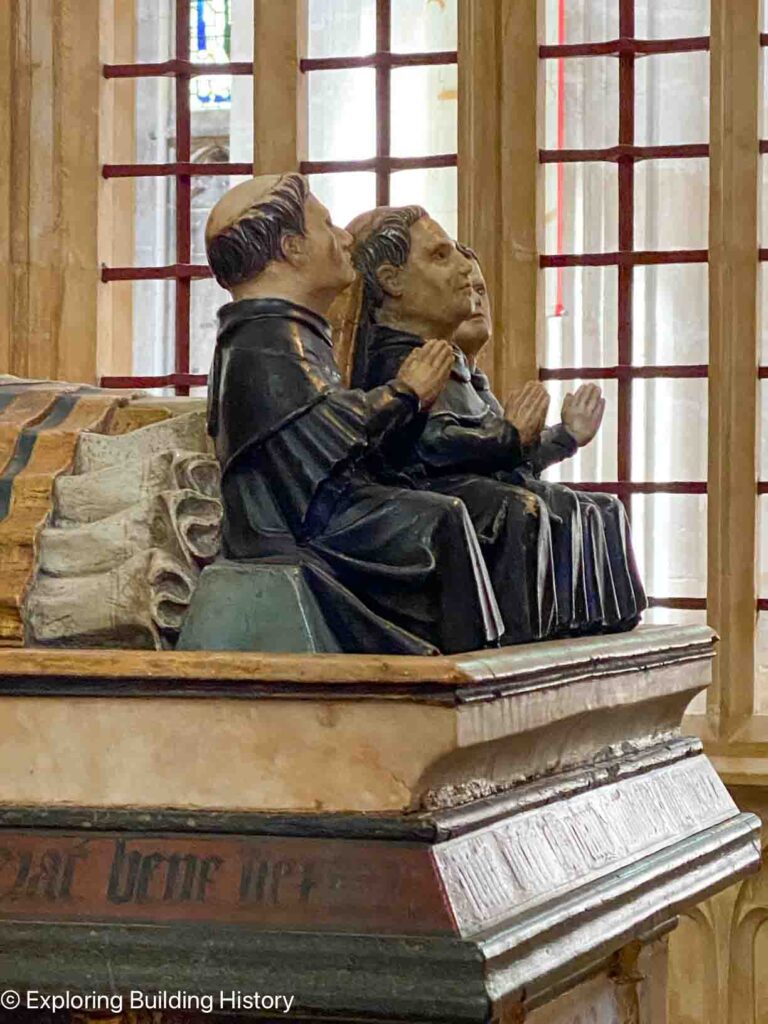
3 Benedictines pray at the feet of the bishop – perhaps these were the monks endowed to pray for Bishop Wykeham’s soul.
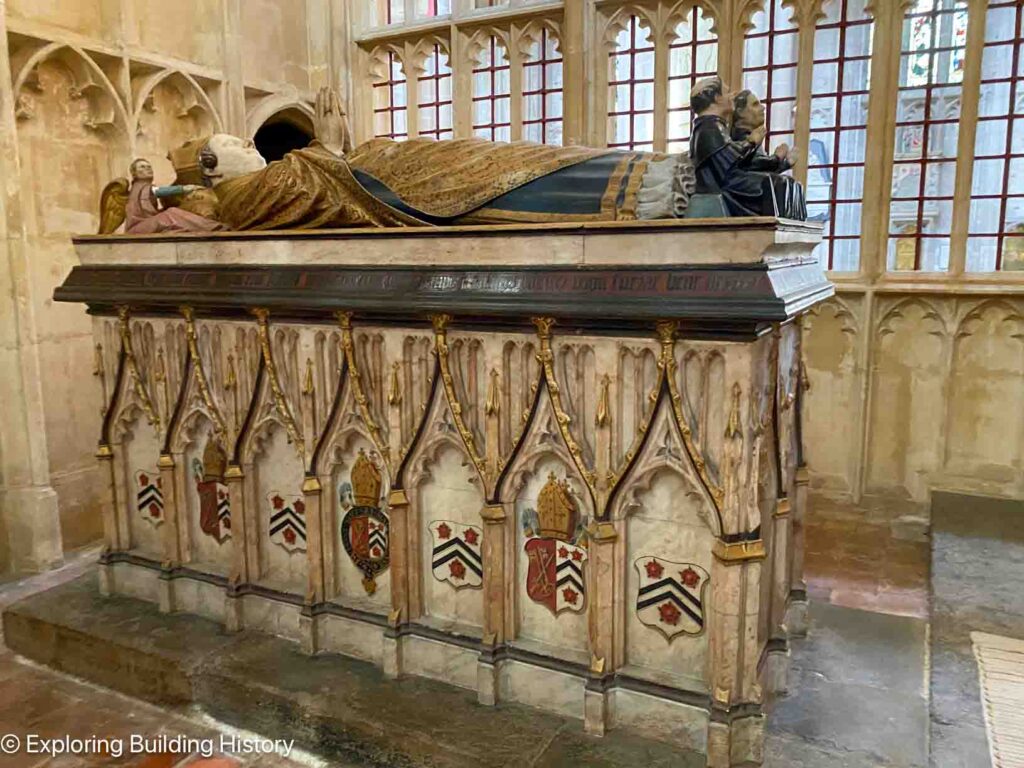
The tomb of Bishop William Wykeham
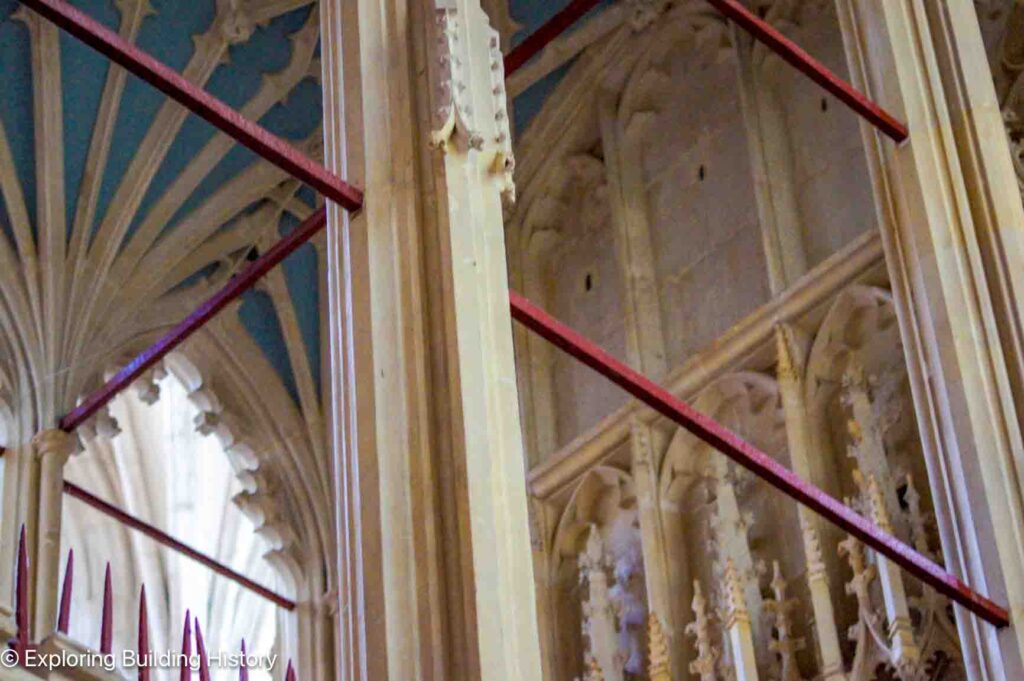
The lierne vault theme continues in the chantry. Soaring pinnacles with crockets are features of the emerging phase of Perpendicular architecture at the time.
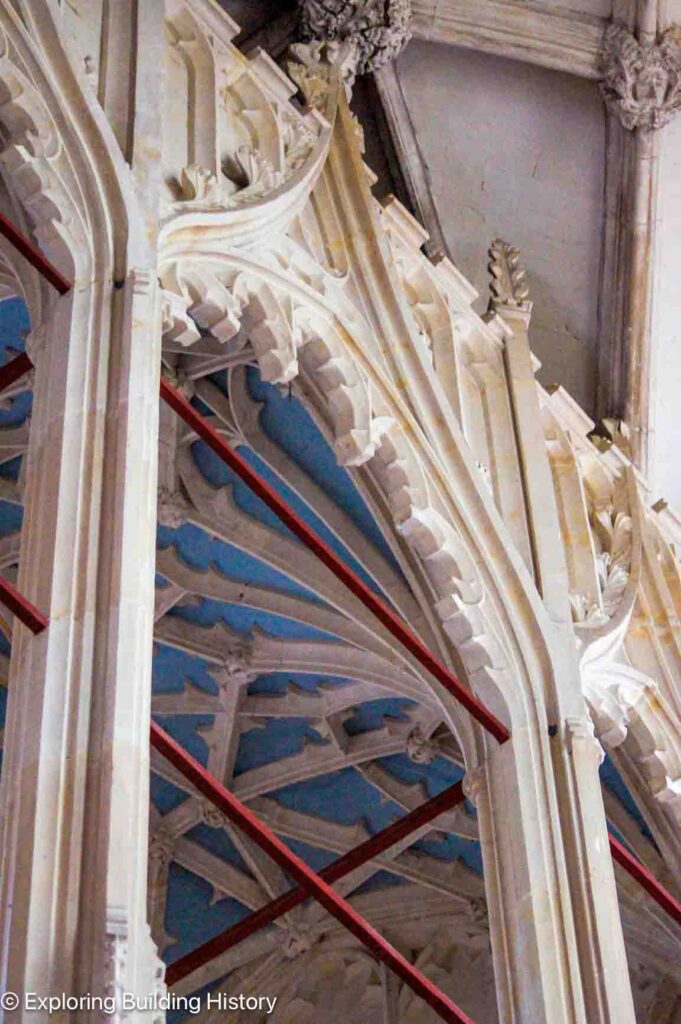
Ogee arch headers with elaborate cusping
FOR MORE INFORMATION ON CHANTRIES CLICK https://www.exploringbuildinghistory.co.uk/grand-tour-of-winchester-part-vii-200-years-of-the-cage-chantry/
NOTES
[i] Jon Cannon, The Great English Cathedrals and the world that made them (Constable: London, 2007; repr. 2011), p. 137.
[ii] Cannon, p. 446.
[iii] Cannon, p. 137.
[iv] P. Partner, ‘Wykeham, William (c. 1324–1404), bishop of Winchester, administrator, and founder of Winchester College and New College, Oxford’, Oxford Dictionary of National Biography, 23 September 2004. https://www.oxforddnb.com/view/10.1093/ref:odnb/9780198614128.001.0001/odnb-9780198614128-e-30127 [accessed 28 August 2025].
[v] Cannon, p. 447.
BIBLIOGRAPHY
Cannon, Jon, The Great English Cathedrals and the world that made them (Constable: London, 2007; repr. 2011)
Partner, P., ‘Wykeham, William (c. 1324–1404), bishop of Winchester, administrator, and founder of Winchester College and New College, Oxford’, Oxford Dictionary of National Biography, 23 September 2004. https://www.oxforddnb.com/view/10.1093/ref:odnb/9780198614128.001.0001/odnb-9780198614128-e-30127 [accessed 28 August 2025].

